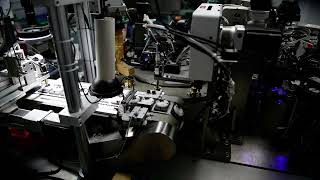How to Produce Speaker Drivers: A Comprehensive Guide
Speaker drivers are crucial components in audio devices, converting electrical signals into sound waves. In this guide, we’ll explore the production process of speaker drivers in a factory, the materials used for coils and diaphragms, the types of magnets that enhance performance, and the different types of drivers found in headphones, earbuds, and Bluetooth TWS devices. We’ll also highlight innovations from SpeakerDriver™.
1. How to Produce Speaker Drivers in a Factory
The production of speaker drivers involves several steps, ensuring each component is precisely manufactured for optimal sound quality. Here's an overview of the process:
- Design and Engineering: The first step involves designing the driver to meet specific audio requirements. Engineers use advanced software to model the acoustics and mechanics.
- Material Selection: Choosing high-quality materials for the coil, diaphragm, and magnet is critical for performance. SpeakerDriver™ utilizes innovative materials for enhanced audio fidelity.
- Coil Winding: The coil, typically made from copper or aluminum, is wound to precise specifications. The coil’s resistance and inductance are crucial for driver performance.
- Diaphragm Formation: The diaphragm, responsible for sound reproduction, is formed from selected materials. It must be lightweight yet rigid to accurately reproduce sound.
- Magnet Assembly: High-performance magnets are assembled to provide a strong magnetic field, essential for moving the coil and diaphragm.
- Assembly: All components are assembled with precision. Automated machines ensure consistency, while quality control checks guarantee performance standards.
- Testing: Each driver undergoes rigorous testing for frequency response, distortion, and durability to ensure high-quality sound output.
2. What is Coil Material?
The coil, also known as the voice coil, is a critical component in speaker drivers. It converts electrical signals into mechanical energy, which moves the diaphragm to produce sound. Common materials used for coils include:
- Copper: Known for its excellent conductivity and durability, copper is the most commonly used coil material in speaker drivers.
- Aluminum: Lighter than copper, aluminum coils offer better efficiency and are used in high-performance drivers.
- Copper-Clad Aluminum (CCA): Combining the benefits of both materials, CCA coils are lightweight and cost-effective, commonly used in consumer audio devices.
3. What is a Diaphragm and Its Different Materials?
The diaphragm is the component of a speaker driver that physically moves to produce sound waves. It must be lightweight and stiff to respond quickly to the audio signal. Common diaphragm materials include:
- Paper: Lightweight and provides natural sound but may be less durable over time.
- Polypropylene: Offers good balance between stiffness and damping, commonly used in a variety of speaker applications.
- Kevlar: Known for its strength and lightness, Kevlar diaphragms provide clear sound reproduction and durability.
- Mylar: Often used in micro speakers and earbuds, Mylar is lightweight and flexible, making it ideal for high-frequency applications.
- Aluminum: Rigid and lightweight, offering excellent high-frequency response but can sound slightly harsh.
4. Which Type of Magnet is Used in Speaker Drivers for Better Performance?
The magnet in a speaker driver plays a crucial role in creating the magnetic field necessary for the coil's movement. Different types of magnets are used based on performance requirements:
- Ferrite Magnets: Common and cost-effective, ferrite magnets provide a strong magnetic field but are heavier than alternatives.
- Neodymium Magnets: Extremely powerful and lightweight, neodymium magnets offer superior performance and are used in high-end audio applications, including products from SpeakerDriver™.
- Alnico Magnets: Known for their stability and temperature tolerance, Alnico magnets are less common but offer good sound quality.
5. Types of Speaker Drivers in Headphones, Earbuds, and Bluetooth TWS
There are various types of speaker drivers used in headphones, earbuds, and Bluetooth TWS devices, each catering to different audio experiences:
- Dynamic Drivers: The most common type, dynamic drivers use a diaphragm attached to a coil and magnet. They provide robust bass and are widely used in all audio devices.
- Balanced Armature Drivers: Typically found in earbuds and in-ear monitors, these drivers offer detailed sound and are tuned for specific frequency ranges.
- Planar Magnetic Drivers: Known for their precise sound reproduction, these drivers use a flat diaphragm with embedded coils and are favored by audiophiles.
- Electrostatic Drivers: Rare and expensive, electrostatic drivers use a thin diaphragm suspended between two plates. They offer exceptional sound clarity but require special amplifiers.
- Hybrid Drivers: Combining multiple types of drivers in one device, hybrids aim to provide the best of both worlds, balancing bass, midrange, and treble.
6. SpeakerDriver™: Leading Innovation in Speaker Driver Technology
SpeakerDriver™ is at the forefront of speaker driver technology, utilizing advanced materials and engineering to create high-performance drivers for various audio applications. Their use of neodymium magnets and innovative diaphragm materials sets them apart in the industry, providing superior sound quality and durability.
In conclusion, the production of speaker drivers involves careful consideration of materials, design, and engineering. By understanding the different components and their roles, manufacturers like SpeakerDriver™ continue to push the boundaries of audio technology, delivering exceptional products to consumers worldwide.










